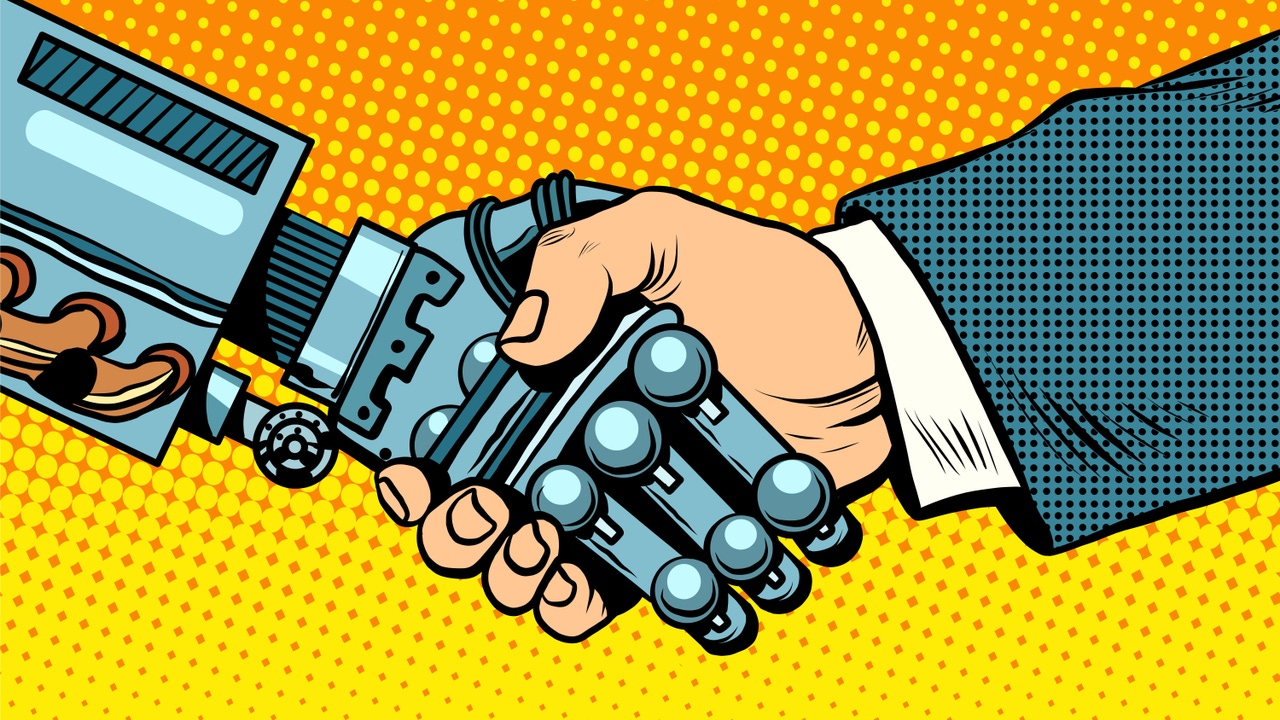Quote for the day:
"Leaders should influence others in such a way that it builds people up, encourages and edifies them so they can duplicate this attitude in others." -- Bob Goshen
A look under the hood of transfomers, the engine driving AI model evolution

Depending on the application, a transformer model follows an encoder-decoder
architecture. The encoder component learns a vector representation of data that
can then be used for downstream tasks like classification and sentiment
analysis. The decoder component takes a vector or latent representation of the
text or image and uses it to generate new text, making it useful for tasks like
sentence completion and summarization. For this reason, many familiar
state-of-the-art models, such the GPT family, are decoder only. Encoder-decoder
models combine both components, making them useful for translation and other
sequence-to-sequence tasks. For both encoder and decoder architectures, the core
component is the attention layer, as this is what allows a model to retain
context from words that appear much earlier in the text. ... Currently,
transformers are the dominant architecture for many use cases that require LLMs
and benefit from the most research and development. Although this does not seem
likely to change anytime soon, one different class of model that has gained
interest recently is state-space models (SSMs) such as Mamba. This highly
efficient algorithm can handle very long sequences of data, whereas transformers
are limited by a context window.
McKinsey On Return To Office: Leaders Are Focused On The Wrong Thing

Unsurprisingly, older employees report higher satisfaction with on-site work
than their younger colleagues. Nevertheless, employees across all work models
report similar satisfaction levels, which debunks the belief that bringing
people back in person automatically enhances engagement or retention. Worse
still, leaders consistently overestimate their organizations’ maturity regarding
the very factors used to justify returning to the office. ... The balance of
power may have shifted back to bosses, but, as Voltaire said first and
Spider-Man famously learns from Uncle Ben, “with great power comes great
responsibility.” No matter what workplace model a given employee finds
themselves in today, the past few years likely opened their eyes to the power of
choice and flexibility and the chasm between modern hospitality and
retail-oriented experiences and the vibrancy and community in a traditional
office. ... So employees believe they are doing the work, and they may accept
that flexibility is a reward for objectively high performance. If executives
believe the purpose of the office is to accelerate innovation, connectivity, and
mentoring, they are on the hook to ensure it does. Leaders must model new
behaviors, invest in workplace experience, and learn to measure outcomes without
a bias for presence. Employees may quit as soon as the power pendulum swings
back.
8 tips for being a more decisive leader

“Clarity is what is expected from a leader,” says Malhotra. “Clarity of vision,
clarity in strategy, clarity of plan, clarity in the process, and clarity in how
to measure success.” Showing up with an answer is not as important to the
decision as bringing clarity to the process. “As a leader, you’re the force
multiplier for your organization,” he says. “Force multiplying is a vector
quantity, not a scalar quantity. It’s a vector quantity because the direction is
very important. It’s not just the magnitude. It’s the direction, too. So being a
force multiplier requires that you are clear when it comes to the end state you
are trying to achieve.” ... “There are two things you have to consider: the
urgency and the importance of the decision,” says Efrain Ruh, field CTO for
Continental Europe at Digitate. If something is complex and important, take your
time and gather as much information as possible. But if it is a decision that is
easy to come back from, he says, “I try not to go too deep.” “There are
‘single-door decisions’ and ‘double-door decisions,’” agrees Malhotra. When it’s
a single-door decision, you can never come back through that door after you have
walked through it. ... When you step into a leadership role, you begin to see
everything from a high-level strategy point of view. But your decisions will
often affect people with their boots on the ground.
Can English Dethrone Python as Top Programming Language?

IDC predicts that by 2028, natural language will become the most widely used
programming language, with developers using it to create 70% of net-new digital
solutions. (Source: IDC FutureScape: Worldwide Developer and DevOps 2025
Predictions) “I actually think that the best phrasing of this prediction would
be to replace ‘natural language’ with ‘English’ because of the dominance of
English as a spoken and written language worldwide,” Dayaratna said. Moreover,
he said he believes that in four to five years, developers will increasingly go
to a chatbot-like interface and use natural language to produce digital
solutions. Meanwhile, code will be used to innovate on the technology substrate
that enables this kind of technology. “In other words, we’re not far from a
world that witnesses the demise of commercial off-the-shelf software simply
because it will be so easy to create such software, in a custom way, for an
organization’s business processes,” Dayaratna said. Hence, he explained that we
are seeing the emergence of what Amjad Masad, CEO of Replit, called the era of
“personal software.” “Just as the Mac inaugurated personal computing in 1984,
generative AI has initiated the era of ‘personal software’ that recognizes the
specificity of individual and organizational preferences,” Dayaratna said.
What is anomaly detection? Behavior-based analysis for cyber threats

“Anomaly detection is the holy grail of cyber detection where, if you do it
right, you don’t need to know a priori the bad thing that you’re looking for,”
Bruce Potter, CEO and founder of Turngate, tells CSO. “It’ll just show up
because it doesn’t look like anything else or doesn’t look like it’s supposed
to. People have been tilting at that windmill for a long time, since the
1980s, trying to figure out what normal is so they can look for deviations
from it to find all the bad things happening in their enterprises.” ...
Although predicated on advanced math concepts, anomaly detection, or as the
NIST Cybersecurity Framework 2.0 calls it, “adverse event analysis,” has over
the past two decades been incorporated into a wide range of cybersecurity
tools, including endpoint detection and response (EDR), firewall, and security
information and event management (SIEM) tools. “In general, you can split the
detection universe into two halves,” Potter says. “One is finding known bads,
and then one is finding things that might be bad. Known bads are typically
like a signature base where I know very specifically if I see this file or
this exact thing happened on the system, it’s bad.” Known bads are typically
flagged by fundamental cybersecurity tools.
Open Source AI Models: Perfect Storm for Malicious Code, Vulnerabilities

Executable data files are not the only threats, however. Licensing is another
issue: While pretrained AI models are frequently called "open source AI," they
generally do not provide all the information needed to reproduce the AI model,
such as code and training data. Instead, they provide the weights generated by
the training and are covered by licenses that are not always open source
compatible. Creating commercial products or services from such models can
potentially result in violating the licenses, says Andrew Stiefel, a senior
product manager at Endor Labs. "There's a lot of complexity in the licenses
for models," he says. "You have the actual model binary itself, the weights,
the training data, all of those could have different licenses, and you need to
understand what that means for your business." Model alignment — how well its
output aligns with the developers' and users' values — is the final wildcard.
DeepSeek, for example, allows users to create malware and viruses, researchers
found. Other models — such as OpenAI's o3-mini model, which boasts more
stringent alignment — has already been jail broken by researchers. These
problems are unique to AI systems and the boundaries of how to test for such
weaknesses remains a fertile field for researchers, says ReversingLabs'
Pericin.
Risk Matters: Cyber Risk and AI – The Changing Landscape

Although AI assists organizations defend against cyber-attacks, it is a
double-edged sword. More to the point, AI is also providing cyber attackers
with an array of cost-efficient techniques that facilitate their
cyber-attacks. Sophisticated AI-generated phishing attacks, social engineering
attacks, and ransomware attacks are just a few of the ways AI has made the
cyber-attack landscape more lethal. AI-generated models used by cyber
attackers and cyber defenders have been evolving at a rapid pace. As a result,
the strategic interactions between cyber attackers and cyber defenders have
become more automated, more dynamic, more adaptive, and more complex. These
developments have increased, and substantially changed, the game-theoretic
aspects associated with cyber risk. ... Besides considering the total amount
to spend on cybersecurity-related activities, a subsidiary question for
organizations to answer is: How much of our organization’s
cybersecurity-related budget should be devoted to developing and implementing
AI models designed to reduce the likelihood of a cyber incident? In answering
this subsidiary question, organizations need to consider the costs associated
with the AI models.
Juniper CEO: ‘I am disappointed and somewhat puzzled’ by DOJ merger rejection

“They’re taking such a narrow view of the total transaction, which is the
wireless line segment, a relatively small part of Juniper’s business, a small
part of HPE’s business. And even if you do take a look at the wireless
segment, you know we’re talking about a very competitive area with eight or
nine different competitors. It’s unfortunate that we’re in the situation that
we’re in, but that said, that’s okay. We’re prepared to take it to court and
to prove our case and ultimately, hopefully, prevail,” Rahim said. HPE and
Juniper met with the DOJ several times to go over the purchase, but the
companies had no inclination the DOJ would go the direction it did—certainly
with regards to its focus on the wireless market, Rahim said. The DOJ issued a
Complaint “that ignores the reality that HPE and Juniper are two of at least
ten competitors with comparable offerings and capabilities fighting to win
customers every day,” the companies wrote. “A Complaint whose description of
competitive dynamics in the wireless local area networking (WLAN) space is
divorced from reality; and a Complaint that contradicts the conclusions
reached by antitrust regulators around the world that have unconditionally
cleared the transaction.”
The Benefits of the M&A Frenzy in Fraud Solutions

With businesses looking to reduce the number of vendors they work with to
lower integration costs, David Mattei, strategic advisor at Datos Insights,
expects "a higher momentum of M&A activities in 2025 as vendors race to
grow." "Single-solution vendors have a harder time competing in today's
world," and small to medium-sized single solution vendors "are likely to be
acquired," Mattei said. LexisNexis' acquisition of IDVerse in December 2024 is
an example of this this trend. ... Fraud executives agree that the most
pragmatic approach today is proactive communication and awareness campaigns,
and the data supports their effectiveness. However, the most anticipated and
potentially effective solution is consortia-based fraud detection, combining
risk signals from both sending and receiving financial institutions, Fooshee
told Information Security Media Group. The challenge lies in overcoming
resistance to information sharing - from fraud teams, compliance, legal and
regulators - because of concerns over data integrity, integration complexities
and privacy restrictions. Interestingly, markets most affected by scams and
with simpler regulatory landscapes are finding ways to navigate these barriers
more effectively.
Apple’s emotional lamp and the future of robots

It’s clear that Apple’s lamp is programmed to move in a way that deludes users
into believing that the it has internal states that it doesn’t actually have.
... Apple’s lamp research definitely sheds light on where our interaction with
robots may be heading—a new category of appliance that might well be called
the “emotional robot.” A key component of the research was a user study
comparing how people perceived a robot using functional and expressive
movements versus one that uses only functional movements. ... The biggest
takeaway from Apple’s ELEGNT research is likely that neither a human-like
voice nor a human-like body, head, or face is required for a robot to
successfully trick a human into relating to it as a sentient being with
internal thoughts, feelings, and emotions. ELEGNT is not a prototype product;
it is instead a lab and social experiment. But that doesn’t mean a product
based on this research will not soon be available on a desktop near you. ...
Apple is developing a desktop robot project, codenamed J595, and is targeting
a launch within two years. According to reports based on leaks, the robot
might look a little like Apple’s iMac G4, which was a lamp-like form factor
featuring a screen at the end of a moveable “arm.”
No comments:
Post a Comment